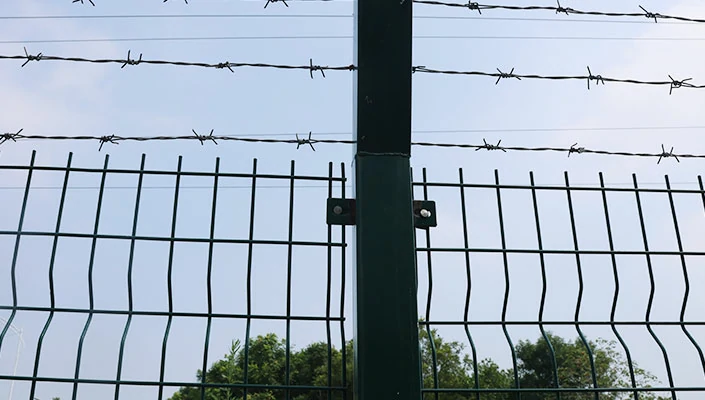welded wire mesh for concrete
Welded Wire Mesh for Concrete An Essential Component in Modern Construction
In the realm of modern construction, the integrity and durability of structures are paramount. One of the key materials that contribute to this strength is welded wire mesh (WWM). Specifically designed for reinforcing concrete, welded wire mesh plays a crucial role in enhancing the performance and longevity of concrete structures, making it an essential component in construction projects ranging from residential buildings to large infrastructures.
What is Welded Wire Mesh?
Welded wire mesh is composed of a grid of wires that are electrically welded together at their intersections. This creates a strong and stable framework that can be easily manipulated to fit various shapes and sizes. The most common materials used in the production of welded wire mesh include galvanized steel and black steel. The choice of material often depends on the specific requirements of the project, including exposure to weather, potential corrosive elements, and load-bearing needs.
Advantages of Using Welded Wire Mesh in Concrete
1. Enhanced Structural Integrity One of the primary benefits of using welded wire mesh in concrete is its ability to provide enhanced structural integrity. When embedded in concrete, it helps distribute loads evenly across the surface. This uniform distribution of tension and compression reduces the likelihood of cracking and structural failure, which is critical in ensuring safety and longevity.
2. Cost-Effectiveness Utilizing welded wire mesh in concrete applications can significantly reduce the amount of concrete needed for a project. Because it improves load-bearing capacity, designers can often use thinner slabs than they would without reinforcement. This not only saves material costs but also decreases labor expenses as less concrete requires placement.
welded wire mesh for concrete

3. Ease of Installation Welded wire mesh is relatively easy to handle and install. Because it comes in sheets or rolls, construction teams can conveniently cut it to fit specific shapes, making it adaptable to various project needs. Furthermore, the pre-welded design ensures that users do not have to spend time tying individual rebar pieces together, streamlining the construction process.
4. Versatility Welded wire mesh is highly versatile and can be used in a multitude of concrete applications. It is commonly employed in slabs, driveways, sidewalks, foundations, bridge decks, and pavements. Its ability to conform to different configurations ensures that it remains a preferred choice for both small-scale projects and large civil engineering works.
5. Resistance to Corrosion In most construction scenarios, welded wire mesh exhibits excellent resistance to corrosion, particularly when made from galvanized steel. This property is particularly vital in areas with high moisture or environmental stress, as it extends the lifespan of the mesh and, by extension, the concrete structure it reinforces.
Environmental Considerations
Using welded wire mesh can also promote more environmentally sustainable construction practices. Its efficiency in reducing the volume of concrete required not only leads to cost savings but also minimizes the environmental footprint associated with concrete production. Additionally, many manufacturers produce welded wire mesh from recycled materials, further supporting eco-friendly construction endeavors.
Conclusion
In conclusion, welded wire mesh has emerged as an indispensable component in modern concrete construction. Its numerous benefits—including enhanced structural integrity, cost-effectiveness, ease of installation, versatility, and corrosion resistance—make it a vital material for various applications. Whether it's a simple residential project or a complex infrastructure endeavor, incorporating welded wire mesh into concrete design ensures greater durability and resilience, supporting the ever-growing demands of construction in today’s world. As the industry continues to evolve, advancing technologies in the production and application of welded wire mesh will undoubtedly lead to further innovations in construction methods and materials, solidifying its place in the future of building design.
-
Space-Saving Chain Fence Hacks Vertical Gardening with Cyclone MeshNewsJul.16,2025
-
Innovations in Iron Nail Wire Production for Modern ConstructionNewsJul.16,2025
-
Creative Uses of Wire Netting Fence in Modern Landscape DesignNewsJul.16,2025
-
Barbed Wire Fence Innovations in Anti-Climb TechnologyNewsJul.16,2025
-
Architectural Uses of Umbrella Nails for Aesthetic Roof DesignsNewsJul.16,2025
-
Architectural Uses of Razor Barbed Wire in Secure Urban DesignNewsJul.16,2025




